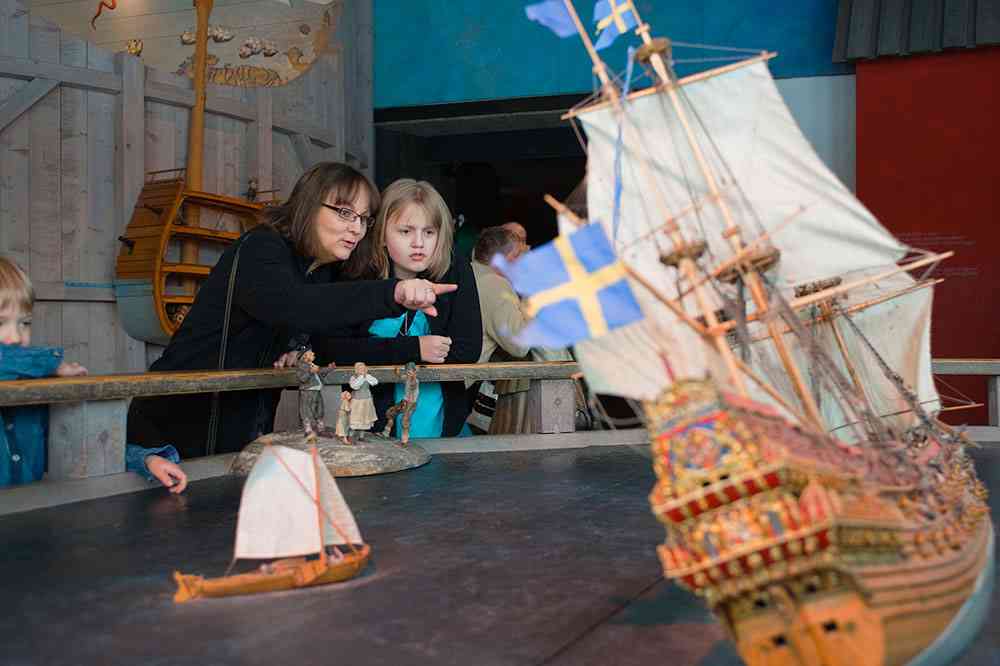Already the day after Vasa sank, the Council of State started looking for the responsible parties, but nobody was ever punished for one of the greatest disasters of Sweden's Great Power Era.
The loss of the magnificent Vasa after barely a kilometre's sailing was a catastrophe on a grand scale, in full view of Stockholm's population and foreign agents from all over northern Europe. Before his clothes were even dry, Captain Söfring Hansson was imprisoned and interrogated by the Council of State. He swore that the crew had been sober and the guns properly lashed; if they had not been, this could have been a contributory factor to the sinking. Söfring reported the orders he had given, and added that the ship had been too unstable under sail.
On 12 August, the Council sent their first report to Gustav II Adolf, who was with the army in Prussia, busy with the war against Poland-Lithuania. One can still read his fury in the reply, which insisted on an inquiry into what lay behind the catastrophe, and that the guilty should be punished.
The officers feign ignorance
The Council was actually ahead of the king, having organized an inquest into the loss before they received Gustav Adolf's reply to their report. A special commission of 17 councillors and naval officers was formed, to be chaired by the Admiral of the Realm, Karl Karlsson Gyllenhielm, who was the king's older half-brother.
The inquest was called to order on 5 September at the Tre Kronor palace in Stockholm. Parts of the transcript have disappeared, but we know the bulk of what happened before the commission that day. The surviving officers and senior petty officers, from Vice Admiral Erik Jönsson to boatswain Per Bertilsson, were all asked if they knew the ship was unsteady, and if it was their fault that the ship had sunk. All claimed ignorance of the ship's flaws, until the master, Jöran Matsson, was questioned by the prosecutor.
He was responsible for stowing the ballast, 120 tons of stone in the bottom of the ship to lower the centre of gravity. He said that he had ballasted the ship as deeply as it should be, and then astonished the tribunal. He revealed that before Vasa sailed (probably on the 8th or 9th of July), Captain Söfring had arranged for Vice Admiral Klas Fleming, Gyllenhielm's deputy, to witness a demonstration, in which thirty men ran back and forth over the upper deck to make the ship roll. After just a few trips, the ship was heeling so badly that there was great fear it might capsize at the quay. The demonstration was interrupted, and Matsson reported that he overheard Fleming say, "If only His Majesty were at home!" Still, he did not report to the king the worrying thing he had seen. He was under great pressure from Gustav Adolf to get the ship to sea, and it was rarely a good idea to disappoint the king. His only action was to appoint Söfring Hansson as captain.
The king approved the design
During the interrogations, it became clear that neither the ballast nor loose cannon were behind the sinking. Most witness statements pointed in the same direction: Vasa was badly designed. The next to be questioned were the builders, Arendt de Groote and Hein Jacobsson. Master Henrik Hybertsson, the original designer, had died the year before, handing over responsibility for Vasa to Hein.
When asked, Hein answered directly that the ship was built according to Master Henrik's design, which the king had approved, and they would not budge from this defense, despite the prosecutor questioning them ever more insistently. This left the tribunal nowhere to go without embarrassing the king, but Hein opened the door to the solution a crack. He said that he had widened the ship slightly (around 40 centimetres), which indicates that he still felt some uncertainty in relation to Vasa's measurements. In practice, Hein Jakobsson implied that Master Henrik's design was fatally flawed.
Henrik's partner, the merchant Arendt de Groote, was also questioned. He had been one of the original signatories to the contract, and he backed up Hein, recounting how he had shown the king a picture of a similar ship as a model for Vasa.
The commission now faced an unpleasant dilemma: blame must be assigned, but without blackening the king's name, and without removing anyone whose competence was necessary for the war effort. To a certain degree, the proceedings were really a piece of political theatre, to demonstrate what we would now call "due diligence." Everyone involved had had a month to get their stories straight, and Hein Jacobsson had effectively laid the blame on the perfect scapegoat. Master Henrik could not defend himself and did not need to be punished; the navy could get on with the job of managing the war.
In the end, no one was officially blamed or punished, and all of those questioned were eventually promoted. Hein Jacobsson worked at the navy yard until he retired in 1638, building a string of large, successful ships for the Swedish navy. Jöran Matsson became a captain, and Söfring Hansson became the supervising officer for the navy yard. Klas Fleming was not even questioned, but went on to serve with distinction and died a hero's death in 1644.
Perhaps the most interesting part of the inquest from a technical point of view is an appendix at the end, recording the opinions of a group of professional experts, captains and shipwrights. Without the benefit of calculus or modern naval engineering theory, they correctly identified the forces at work and the cause of the instability. As one of them put it, the ship did not have enough "belly" to carry the high and heavy upperworks.
